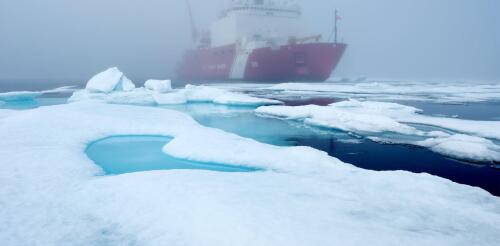Global warming
One big question keeps surfacing after the Biden administration announced plans to raise auto standards so sharply they would likely boost electric vehicle production to 67% of all new passenger vehicle sales in under a decade: Can automakers pull that off? The proposal would require a huge change in production and consumer choice. To put it in perspective, in 2022 about 6% of U.S. passenger vehicle sales were all-electric. I study the electric vehicle industry and policy. Here’s why I think the Environmental Protection Agency’s plan can succeed. Automakers have met tough targets before Automakers typically push back against tougher rules and often lobby to get standards relaxed. However, U.S. car companies have also shown that they can meet ambitious goals. When California began requiring that car companies sell a certain percentage of zero-emissions vehicles, its initial target translated to about 15% of all new car sales by 2025. Automakers quickly exceeded tha...
Home runs are exhilarating – those lofting moments when everyone looks skyward, baseball players and fans alike, anxiously awaiting the outcome: run or out, win or loss, elation or despair. Over the past several Major League Baseball seasons, home run numbers have climbed dramatically, including Aaron Judge’s record-breaking 62 homers for the New York Yankees in 2022. Baseball analysts have pointed to many different factors for this surge, from changes in baseball construction to advances in game analytics. Our study, published April 7, 2023, offers solid evidence for another cause – rising global temperatures. What we learned from 100,000 baseball games The physics tell a simple and compelling story: Warm air is less dense than cool air. As air heats up and molecules move faster, the air expands, leaving more space between molecules. As a result, a batted ball should fly farther on a warmer day than it would on a cooler day owing to less air resistance. Th...
Wildfires and severe drought are killing trees at an alarming rate across the West, and forests are struggling to recover as the planet warms. However, new research shows there are ways to improve forests’ chances of recovery – by altering how wildfires burn. In a new study, we teamed up with over 50 other fire ecologists to examine how forests have recovered – or haven’t – in over 10,000 locations after 334 wildfires. Together, these sites offer an unprecedented look at how forests respond to wildfires and global warming. Our results are sobering. We found that conifer tree seedlings, such as Douglas-fir and ponderosa pine, are increasingly stressed by high temperatures and dry conditions in sites recovering from wildfires. In some sites, our team didn’t find any seedlings at all. That’s worrying, because whether forests recover after a wildfire depends in large part on whether new seedlings can establish themselves and grow. However,...
Leer en español. You’ve probably seen ads promoting gas and oil companies as the solutions to climate change. They’re meant to be inspiring and hopeful, with scenes of a green, clean future. But shiny ads are not all these companies do to protect their commercial interests in the face of a rapidly heating world. Most also provide financial support to industry groups that are spending hundreds of millions of dollars on political activities, often to thwart polices designed to slow climate change. For example, The New York Times recently reported on the Propane Education and Research Council’s attempts to derail efforts to electrify homes and buildings in New York, in part by committing nearly US$900,000 to the New York Propane Gas Association, which flooded social media with misleading information about energy-efficient heat pumps. The American Fuel and Petrochemical Manufacturers, which represents oil refiners and petrochemical firms, has spent millions...
Atmospheric rivers, those long, powerful streams of moisture in the sky, are becoming more frequent in the Arctic, and they’re helping to drive dramatic shrinking of the Arctic’s sea ice cover. While less ice might have some benefits – it would allow more shipping in winter and access to minerals – sea ice loss also contributes to global warming and to extreme storms that cause economic damage well beyond the Arctic. I’m an atmospheric scientist. In a new study of the Barents-Kara Seas and the neighboring central Arctic, published Feb. 6, 2023, in Nature Climate Change, my colleagues and I found that these storms reached this region more often and were responsible for over a third of the region’s early winter sea ice decline since 1979. More frequent atmospheric rivers By early winter, the temperature in most of the Arctic is well below freezing and the days are mostly dark. Sea ice should be growing and spreading over a wider area. Yet the...



